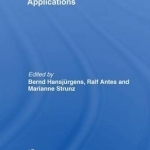Permit Trading in Different Applications
BookThis item doesn’t have any media yet
2016 | Business & Finance
Permit trading is an environmental policy instrument that has received increasing levels of attention over recent years. Coming from the field of air quality management, with the European CO2 emissions trading system being the most prominent example, it enters new fields of application, such as land use policy and biodiversity protection, water quality and water quantity trading. This book gives an overview of these recent developments and discusses the possibilities and limits of permit trading in environmental policies. The advantages of permit trading are not only seen with respect to economic efficiency, which leads to achieving the environmental target at minimum cost, but also with respect to the instrument's environmental effectiveness. By setting a cap for the overall emissions, a given environmental target can be met. This makes permit trading an interesting case for many environmental fields where safeguarding the environmental target plays a dominant role. Against this background, permit trading is discussed in environmental policy fields, where it has not been considered before, for example, land use management, biodiversity protection and water trading.
Permit Trading in Different Applications analyses the properties of permit trading: its possibilities and limitations, its design options and its restrictions on a more general level. It demonstrates how lessons learnt in established policy fields like air quality management can be transferred to new and emerging fields of application. This collection will provide students and practitioners in environmental sciences and policy with valuable research into instrument choice and design with respect to permit trading.
Related Items:
| Published by | Taylor & Francis Ltd |
| Edition | Unknown |
| ISBN | 9781138241312 |
| Language | N/A |
Images And Data Courtesy Of: Taylor & Francis Ltd.
This content (including text, images, videos and other media) is published and used in accordance
with Fair Use.
